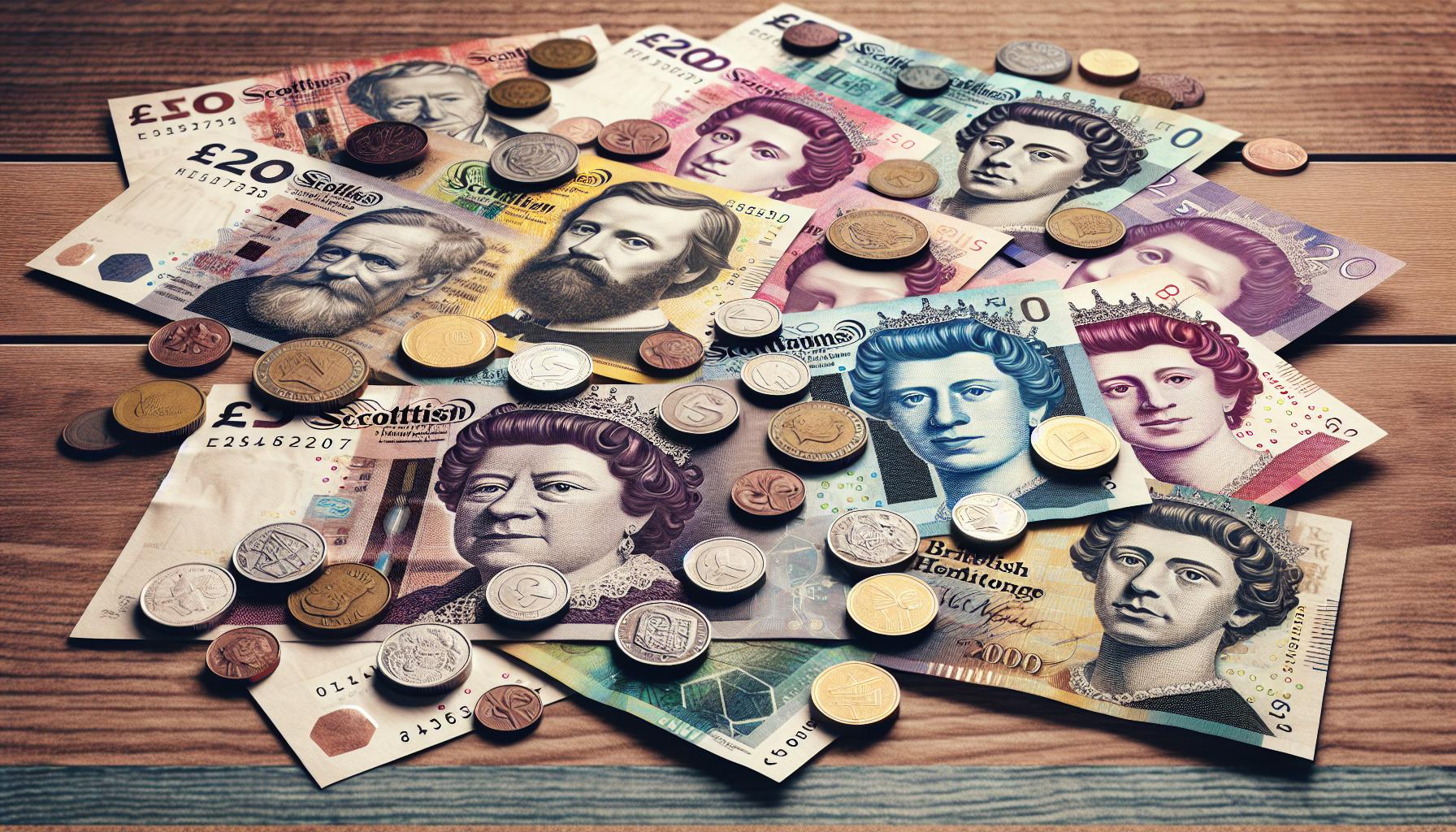Scotland boasts a unique currency system that often sparks curiosity among travelers and locals alike. While the British pound sterling is the official currency, Scotland issues its own banknotes, which feature distinct designs and images celebrating its rich heritage. This fascinating blend of tradition and modernity makes Scottish currency a topic worth exploring.
Understanding the money in Scotland goes beyond just recognizing the notes and coins. It delves into the historical context, the banks that issue these notes, and the cultural significance they hold. Whether planning a visit or simply looking to learn more, grasping the nuances of Scotland’s currency can enhance one’s appreciation of this vibrant nation.
What is the Money in Scotland
Scotland primarily uses the British pound sterling (£), which is subdivided into 100 pence. This widely accepted currency facilitates both domestic and international transactions. Unique to Scotland, several banks issue their own banknotes, including the Bank of Scotland, Royal Bank of Scotland, and Clydesdale Bank. These banknotes bear distinctive designs showcasing historical figures, landmarks, and cultural symbols.
Each banknote, while legal currency, differs from the Bank of England notes. Travelers may notice variations in appearance and feel, with Scottish notes often featuring colorful designs and unique holograms. Despite this, both Scottish and English notes hold equal value across the UK.
In Scotland, accepting and using the local banknotes is standard. Some retailers, however, may hesitate to accept Scottish notes outside Scotland. Understanding these nuances ensures smoother transactions while exploring or conducting business in Scotland.
The Currency Used in Scotland
Scotland primarily uses the British pound sterling (£) as its official currency, with its own banknotes printed by select Scottish banks. Understanding the distinctions between the Scottish pound and British pound is essential for both residents and visitors.
Scottish Pound vs. British Pound
The Scottish pound, while synonymous with the British pound sterling, features unique banknotes. Both currencies are valued equally, as both are GBP. The primary difference lies in the appearance and the issuing banks. The Bank of Scotland, Royal Bank of Scotland, and Clydesdale Bank produce Scottish banknotes, each showcasing distinctive designs that reflect Scotland’s rich heritage. These notes contain themes of Scottish history, culture, and iconic figures, making them a unique representation of Scottish identity.
Notes and Coins
Scotland employs the same denominations as the British pound sterling. Banknotes come in £5, £10, £20, £50, and £100 values. Scottish coins mirror British pounds, with 1p, 2p, 5p, 10p, 20p, 50p, £1, and £2 coins available for transactions. Scottish banknotes, while equally legal, may face some reluctance from retailers outside Scotland. Travelers are encouraged to familiarize themselves with the differences in appearance between Scottish notes and Bank of England notes to facilitate smooth transactions.
The Role of Scottish Banks
Scottish banks play a crucial role in the economy by issuing unique banknotes and providing essential banking services. They contribute to the cultural identity of Scotland while ensuring the smooth functioning of financial transactions.
Major Banks Operating in Scotland
Scottish banks include several prominent institutions that issue banknotes and offer a range of financial services. The major banks are:
- Bank of Scotland: Established in 1695, this bank is one of the oldest banks in the UK. It produces its own series of banknotes, showcasing Scottish culture and heritage.
- Royal Bank of Scotland: Founded in 1727, it is known for its significant role in Scottish banking. The Royal Bank of Scotland also issues distinctive banknotes, highlighting notable figures and landmarks.
- Clydesdale Bank: Operating since 1838, Clydesdale Bank offers personal and business banking services. Its banknotes reflect traditional Scottish themes and designs.
- Nationwide Building Society: While primarily a building society, it operates in Scotland and offers various financial products, reinforcing the cooperative banking sector’s presence.
Currency Production
Currency production in Scotland involves unique design and printing processes. Scottish banks facilitate:
- Design: Each banknote features artwork that reflects Scotland’s history, culture, and important figures. Themes include famous authors, landmarks, and significant events.
- Security Features: Banknotes incorporate various security elements, such as holograms, watermarks, and microprinting, to prevent counterfeiting.
- Collaboration: Scottish banks often collaborate with organizations like the British Security Printing to ensure high-quality and secure banknote production.
These processes ensure that Scottish banknotes remain a valuable part of the financial ecosystem while showcasing Scotland’s rich heritage.
Cultural Significance of Scottish Currency
Scottish currency serves as more than just a medium of exchange; it embodies Scotland’s rich cultural identity. Unique banknotes designed by Scottish banks reflect the nation’s history, notable figures, and significant landmarks. Each denomination—from £5 to £100—carries images that resonate with Scottish heritage, reinforcing a sense of pride among the populace.
The themes depicted on Scottish banknotes include literature, science, and pivotal historical events. For example, the £10 note features images of the famous Scottish poet Robert Burns, while the £20 note honors scientific advances through the portrayal of renowned figures. Such representations foster a connection between the currency and Scotland’s unique narrative, allowing citizens and visitors alike to appreciate the shared cultural legacy.
Scottish banknotes also promote local craftsmanship and artistic expression. The design process involves collaboration with local artists and historians, ensuring that each note captures elements of Scotland’s character. By incorporating art and culture into everyday transactions, Scottish currency reinforces the importance of preserving historical context.
This strong cultural connection encourages acceptance of Scottish banknotes domestically and internationally. While they may not be as widely recognized outside Scotland, the distinctive designs and cultural significance of these notes often intrigue those unfamiliar with them. Travelers and collectors alike value them for their aesthetic appeal, linking currency to a broader appreciation for Scotland’s cultural treasures.
Overall, the cultural significance of Scottish currency manifests through its visual narratives, fostering national pride and contributing to the collective Scottish identity. The prominence of local themes within the currency speaks volumes about Scotland’s commitment to honoring its past while navigating its economic future.
Currency in Scotland
Scotland’s currency is more than just a means of transaction; it embodies the nation’s rich cultural identity. The distinctive Scottish banknotes not only serve as legal tender but also celebrate Scotland’s history and heritage through their unique designs. Understanding the nuances of this currency enhances the experience for both locals and visitors alike.
As travelers navigate the landscape of Scottish finance, recognizing the value of these banknotes can facilitate smoother transactions. The vibrant themes depicted on the currency resonate deeply with Scotland’s identity, making each note a piece of art that tells a story. Embracing this knowledge enriches one’s appreciation for Scotland’s cultural tapestry and its financial ecosystem.






